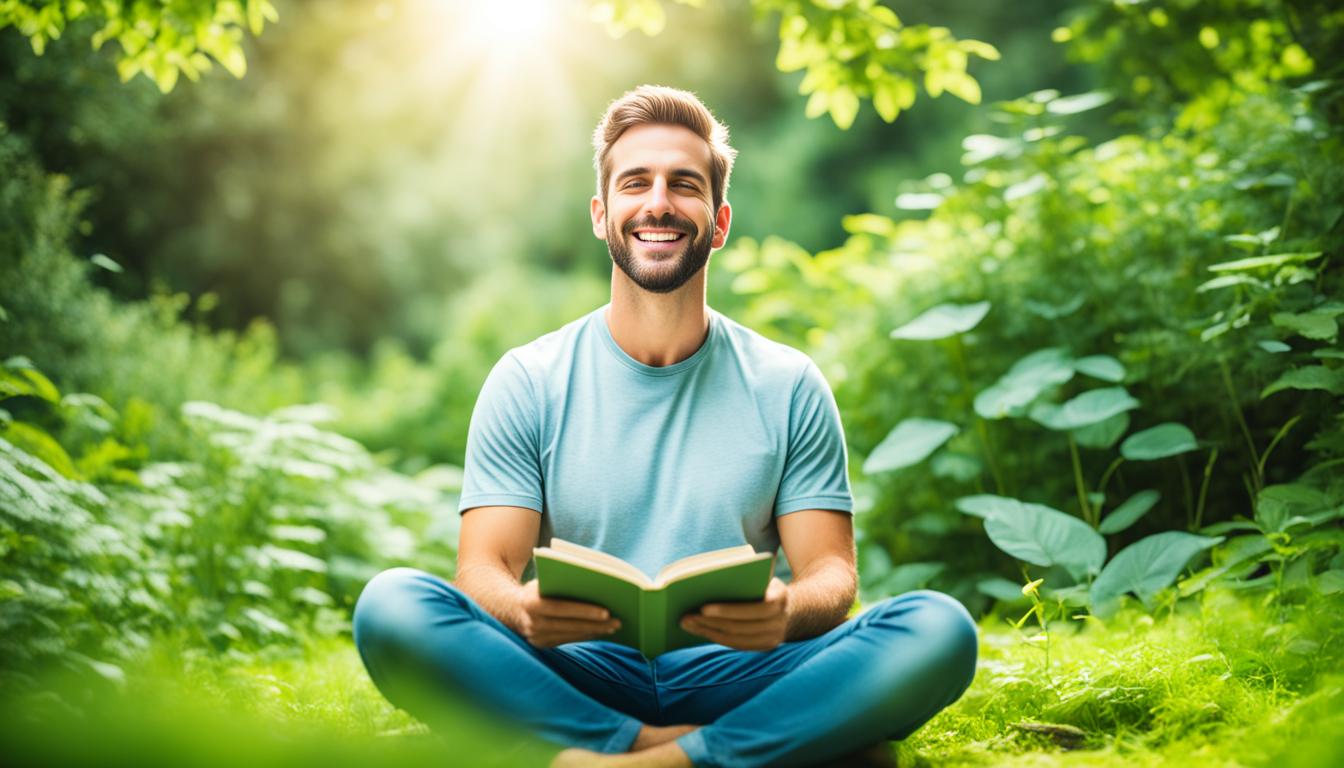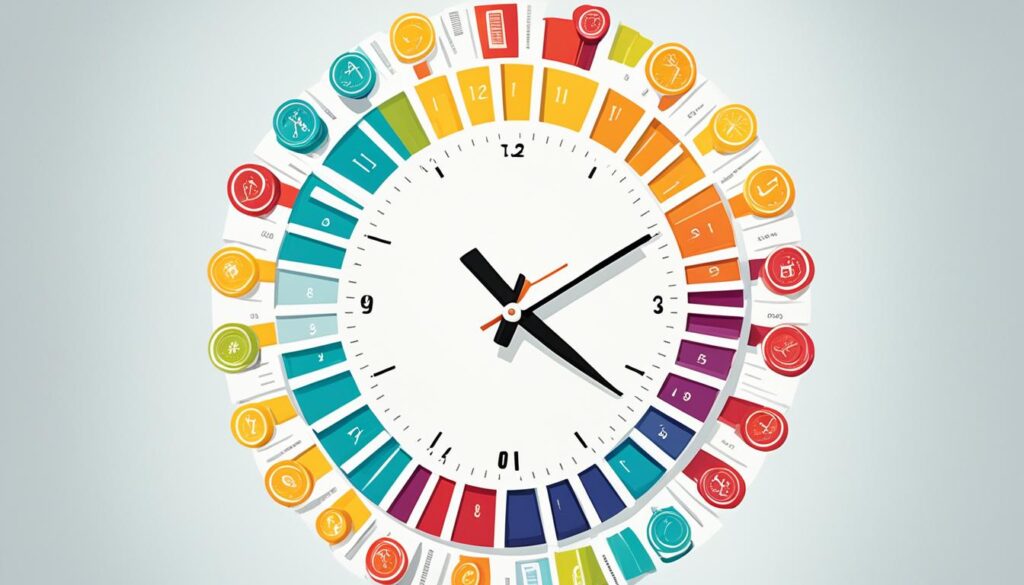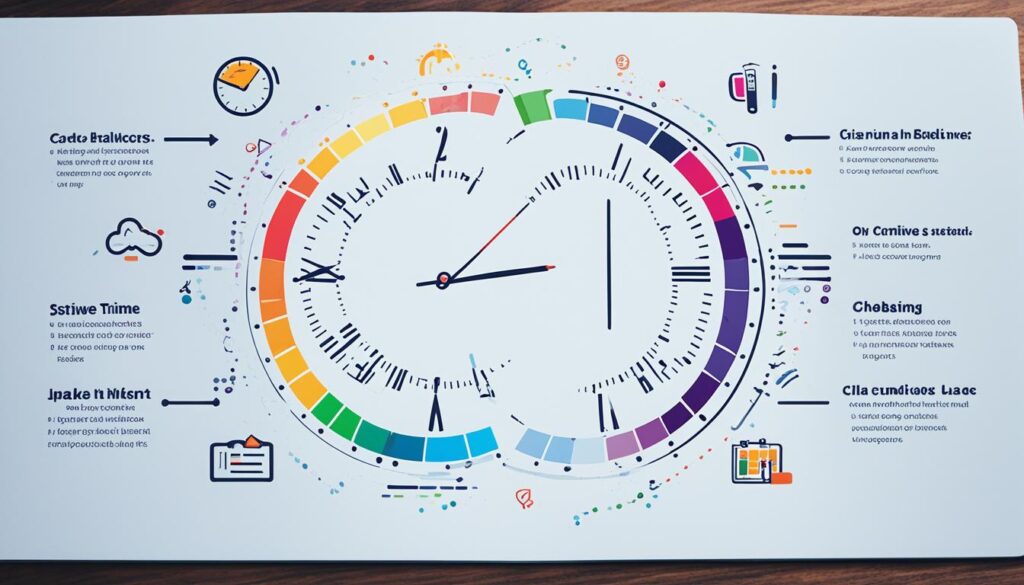Unlock Your Potential with Optimal Slack Time

“You will never find time for anything. If you want time, you must make it.” – Charles Buxton
Are you constantly struggling to find the time to focus on important tasks? Do you often feel overwhelmed by your workload and wish you had more free time to pursue personal and professional growth? It’s time to unlock your potential with optimal slack time.
Slack time, also known as free time, idle time, or downtime, refers to the unproductive moments in our lives when we have the opportunity to pause, reflect, and recharge. Instead of viewing these moments as wasted time, we can leverage them to increase productivity, creativity, and overall well-being.
Key Takeaways:
- Slack time is an opportunity to make time for what truly matters.
- By embracing slack time, you can enhance productivity and creativity.
- Optimal use of slack time can lead to personal and professional growth.
- Slack time allows for reflection, recharge, and overall well-being.
- Don’t wait for time to magically appear – make time for what you value most.
What is Slack Time?
Slack time is a crucial aspect of effective time management and maximizing productivity. It refers to the total amount of time that you can delay a task without affecting the overall project timeline. In other words, it offers flexibility in scheduling and acts as a buffer to offset potential risks.
When planning a project, understanding slack time is essential for efficient resource allocation and task prioritization. It allows project managers to gauge how long a task can be delayed before it starts impeding other work. Represented in days or weeks, slack time provides insights into the project’s flexibility and helps project managers make informed decisions.
The amount of slack in a project depends on various factors, including task dependencies and the nature of the work involved. For instance, tasks with rigid and interdependent timelines may have less slack, while tasks with more flexibility may have greater slack. It is important to consider these factors when building project schedules and allocating resources.
Adding extra slack into the project schedule becomes crucial when there is uncertainty about the duration of certain tasks. It allows for adjustments and prevents potential delays that could compromise the project’s overall success.

Efficient use of slack time is a valuable productivity tip that can help individuals and teams achieve optimal performance. By understanding the concept of slack time and incorporating it into project management practices, you can effectively manage your tasks, adapt to changes, and keep projects on track.
Next, we will explore the importance of slack time in project management and how it can contribute to maximizing productivity and successful project outcomes.
Importance of Slack Time in Project Management
Slack time plays a pivotal role in effective project management, offering valuable benefits for productivity and maximizing downtime. Project managers who prioritize slack time are better equipped to handle changing circumstances, allocate resources efficiently, and keep projects on track.
Prioritizing Tasks and Avoiding Delays
By incorporating slack time into project schedules, managers gain a clear understanding of the relative importance of tasks. This allows them to prioritize accordingly and ensure that critical activities are given the attention they require. With a well-defined hierarchy of tasks, project teams can focus on what matters most, reducing the risk of delays and bottlenecks.
Preventing Additional Costs and Maintaining Budget
Slack time serves as a buffer for projects, helping to prevent additional costs that can arise from rushed or poorly executed work. By allocating sufficient time for each task, project managers reduce the likelihood of errors, rework, and the need for costly revisions. The inclusion of slack time in project management also contributes to projects staying within budget, as contingencies are built-in to account for unexpected challenges.
Enhancing Team Morale and Reducing Stress
Teams that have slack time experience improved morale and reduced stress levels. When deadlines are tight, team members may become overwhelmed or burnt out, leading to decreased productivity and potential errors. By allowing for downtime and flexibility, slack time promotes a healthier work-life balance and fosters a positive working environment.
Calculating Slack Time
Slack time is a valuable metric in project management that helps ensure efficient scheduling and successful project delivery. By accurately calculating slack time, project managers can make informed decisions, minimize risks, and optimize resource allocation. There are various methods for calculating slack time:
1. Subtracting Start and Finish Times
A straightforward approach to calculate slack time is by subtracting the earliest start time (EST) from the latest start time (LST), or the earliest finish time (EFT) from the latest finish time (LFT). This method provides a clear understanding of the allowable delay for each task within the project.
2. Summing Free Slack Time
Alternatively, project managers can calculate slack time by summing the free slack time of all individual project activities. Free slack time refers to the amount of time a task can be delayed without affecting the start or finish time of any subsequent task or the overall project completion date.
Furthermore, calculating slack time offers several benefits:
- Accurate Timelines: By considering slack time, project managers can set realistic deadlines and milestones, ensuring that tasks are completed within the allocated time.
- Task Prioritization: Slack time enables project managers to identify critical and non-critical tasks, allowing them to prioritize resources and attention accordingly.
- Adaptability: Understanding slack time helps project managers navigate potential variations in project duration, inherent uncertainties, and unforeseen delays, enabling them to adjust schedules and resources effectively.
The critical path method (CPM) and Program Evaluation and Review Technique (PERT) are commonly used project scheduling techniques that incorporate slack time calculations for efficient project management. These techniques facilitate the identification of critical paths, which are the longest sequences of dependent tasks that determine the project’s overall duration.
Slack Time Calculation Example:
Consider the following project activities:
| Activity | Duration (Days) | Predecessors |
|---|---|---|
| Task A | 5 | – |
| Task B | 7 | – |
| Task C | 4 | Task A |
| Task D | 6 | Task B, Task C |
In this example, the project’s critical path, determined through CPM or PERT analysis, consists of Task A, Task C, and Task D.
To calculate slack time:
- Determine the earliest start time (EST) and latest start time (LST) for each task within the critical path.
- Subtract the EST from the LST to obtain the slack time for each task.
- Sum the slack times of all tasks within the critical path to determine the total slack time for the project.
By performing this calculation, project managers gain valuable insights into the project’s flexibility, dependencies, and criticality, allowing them to make informed decisions and optimize project scheduling.
Now that you understand how to calculate slack time and its importance in project management, let’s explore the differences between slack time and float time in the next section.

Slack Time vs. Float Time
When it comes to project planning, understanding the concepts of float time and slack time is essential for effective time management. While these terms are often used interchangeably, they have distinct meanings and are utilized based on the specific project planning method. Let’s explore the difference between float time and slack time, and how they contribute to successful project execution.
Float Time: Maximizing Efficiency without Delay
Float time refers to the amount of time a task can be delayed without causing any impact on subsequent activities or project completion. It represents the flexibility within a project schedule, allowing for efficient allocation of resources and preventing unnecessary delays.
One way to visualize float time is to imagine a river flowing smoothly without any obstacles. In the project context, float time represents a similar flow, ensuring tasks can be completed efficiently without causing a downstream bottleneck. It provides project teams with the freedom to allocate resources optimally and focus on high-priority tasks, enhancing overall productivity.
Understanding float time helps project managers prioritize tasks, allocate resources effectively, and adapt to unexpected changes while keeping the project progression on track.
Buffer Time: Safeguarding Against Delays
Buffer time, also known as contingency time, is a predetermined period inserted into the project schedule where no specific work is planned. Its purpose is to create a safety net that protects against unforeseen delays or challenges.
Imagine buffer time as a spare tire in your car. While you hope you won’t need it, having it readily available ensures you can handle unexpected situations without major disruption. In project management, buffer time serves a similar function, allowing for unforeseen obstacles, rework, or additional testing, ensuring overall project success.
Considering Project Constraints
Calculating total slack time, which includes both float time and buffer time, requires considering various project constraints. These constraints may include external deadlines, such as client deliverables or regulatory requirements, as well as resource availability, budget limitations, and other factors that impact project execution.
By taking project constraints into account, project managers can make informed decisions about task prioritization, resource allocation, and risk management. It enables them to allocate appropriate float and buffer time based on the project’s unique requirements.
Using a combination of float time and buffer time allows project managers to strike a balance between efficiency and resilience. The integration of these time management concepts ensures that projects stay on track, adapt to changes, and deliver successful outcomes.

As illustrated in the image above, float time and buffer time are crucial components of project planning. They enable project managers to optimize resource allocation, mitigate risks, and maintain project schedules.
Conclusion
Harnessing the power of optimal slack time is essential for efficient project management and maximizing productivity. By understanding and utilizing slack time, project managers can prioritize tasks, adapt to changes, and stay on schedule. Having slack time in project schedules allows for flexibility, reduces stress and burnout among team members, and ultimately leads to successful project outcomes.
With the right approach to time management and a focus on efficient use of slack time, individuals and organizations can unlock their full potential and achieve their goals. Efficient project management involves understanding the importance of slack time and utilizing it effectively to maximize productivity. It is about finding the right balance between pushing the limits and allowing room for adaptation and optimization.
By incorporating slack time into project schedules, teams can allocate resources appropriately and make informed decisions about task prioritization. This helps maintain a sustainable pace of work, minimize bottlenecks, and ensure that projects are completed on time and within budget. By making the most of slack time and embracing efficient project management practices, individuals and organizations can maximize their productivity, deliver exceptional results, and achieve long-term success.







